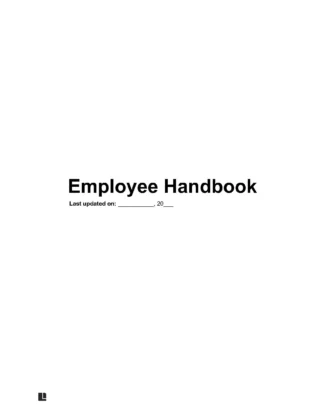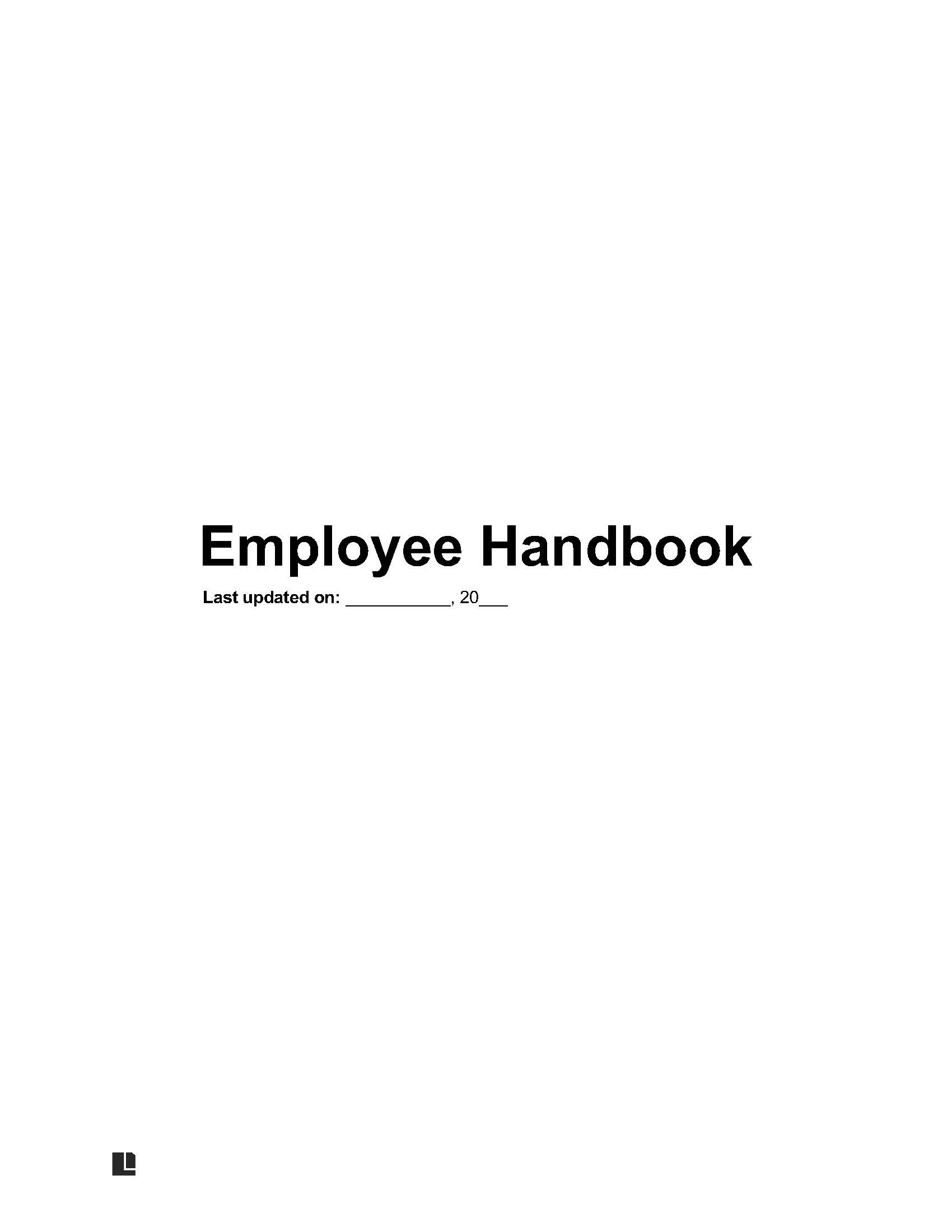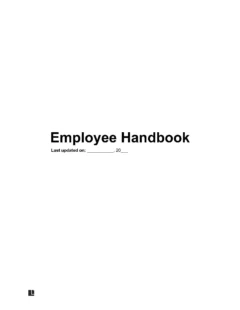
Use an Employee Handbook to educate employees about the legal regulations that guide the employer and employee.

Published October 16, 2023
Written by Josh Sainsbury | Reviewed by Brooke Davis
An Employee Handbook is a collection of procedures, human resources policies, documents, and guidelines outlining an employer’s preferred conduct and benefits. Most employee handbooks are regularly updated to reflect changes to company policy, industry regulations, and labor laws.
Employee handbooks are usually given to new hires on their first workday. Employees are expected to review them to understand what is expected from them.
Here is an employee handbook sample to kickstart your employee handbook creation process — feel free to modify, add, and delete sections and language. Download in PDF or Word format:

An employee handbook aims to educate employees about the legal regulations that guide the employer and employee. Most outline:
Most companies require employees to sign a document showing they have read the handbook and understand its requirements.
Employee handbooks are not required by law. However, state and federal laws require certain employers to maintain written policies on leave of absence, sick leave, paid time off (PTO), harassment, discrimination, health rules, and workplace safety.
Employers also use handbooks as welcome tools to communicate procedures and policies, minimizing miscommunication and misunderstandings.
Writing an employee handbook can be daunting, especially if you’ve never done it before. Here’s what to include:
Start by introducing employees to the guidebook. This section should cover:
Start by talking about your company’s purpose or mission statement. The mission statement is an action-based statement that summarizes your company’s purpose, objectives, and values.
It helps your company respond to change and make decisions that match your priorities. An example of a mission statement for an airline could be “to make air travel faster, more comfortable, and more fun.”
You should also talk about your company’s vision. This is a summary of your company’s long-term goals. It communicates how your company plans to make a difference in your industry. For example, if you run a gaming laptop eCommerce store, your vision could be “to build an online marketplace where people can find the best gaming laptops.”
Next, talk about your company’s employment policies. This should be the most detailed part of the handbook. At a minimum, when applicable, you should include the following sections:
You should also include your company’s social media policy in or alongside your handbook.
Start by informing employees that they must follow the communication policy outlined in this section. Then, write your company’s workplace communication expectations.
Most companies use the same or similar language for this section since most workplaces require employees to communicate respectfully and professionally. For example, you could say, “At [company name], we expect all employees to communicate respectfully and professionally. We will use emails, team meetings, and other tools to inform employees about any news or changes.”
You may want to also cover your company’s cell phone policy here.
This section explains how you pay employees and what benefits employees get. Use this section to show employees how much you value them. This will motivate them to continue working with you.
At a minimum, you should address the following:
End the section with the name and contact information of a human resources (HR) team member who can answer questions about compensation, time off, and benefits.
This section explains how you will evaluate employees’ performance. It also prepares managers for managerial responsibilities by explaining the goals of performance reviews and how managers are expected to lead teams.
You should also use this space to discuss professional development. Also known as professional education, professional development is learning that builds employees’ traits, skills, and competencies. Examples of professional development include:
This section reminds employees that they must maintain the confidentiality of proprietary information about your company, its employees, and its clients. Tell employees that this requirement extends beyond the employment period.
Tell employees how they can report grievances and complaints. An employee complaint form is the easiest route.
Talk about how the company and the employee can terminate the employer-employee relationship. Every state except Montana is an “at-will” state [2] , which means employers can dismiss employees for any reason as long as the reason is not illegal (i.e., firing because of the employee’s race, gender, sexual orientation, disability status, or religion).
If you are in Montana, state that your workplace does not follow “at-will employment.” and that you follow Montana’s Wrongful Discharge from Employment Act.
Under this law, it is illegal for employers to fire an employee who passed a six-month probationary period without an employment contract unless the employer has “good cause.” In other words, employers can only fire employees for failing to do their job, disrupting their business, or some other legitimate business-related reason.
Include a fill-in-the-blank acknowledgment of receipt. Employees can use this section to indicate they have received and read your company’s employee handbook. It should contain fields for the employee’s name, your company name, the employee’s signature, and the date of acknowledgment of receipt.
Writing an employee handbook can be difficult, especially if you have never written one. Here are some tips to help:
What is legally required in an employee handbook varies from jurisdiction to jurisdiction. However, most states require specific types of employers to maintain written policies on sick leave, leave of absence, discrimination, harassment, paid time off, workplace safety, and health rules.
Our employee handbook template and employee handbook samples contain all the necessary sections to comply with federal and state laws.
You should not include the following in an employee handbook:
Use our free employee handbook template to understand better what to include in your employee handbook.
Yes, businesses of all sizes should have employee handbooks. Employee handbooks establish clear employee expectations, help you develop a productive workplace, help you comply with state and federal employment standards and laws, and increase employee satisfaction.
You should update your employee handbook at least once a year. If you don’t, your handbook won’t reflect your business’ current standards and practices, and employees will have difficulty understanding how to meet your standards.
View SourcesLegal Templates uses only high-quality sources, including peer-reviewed studies, to support the facts within our articles. Read our editorial guidelines to learn more about how we keep our content accurate, reliable and trustworthy.

Create your Employee Handbook here!